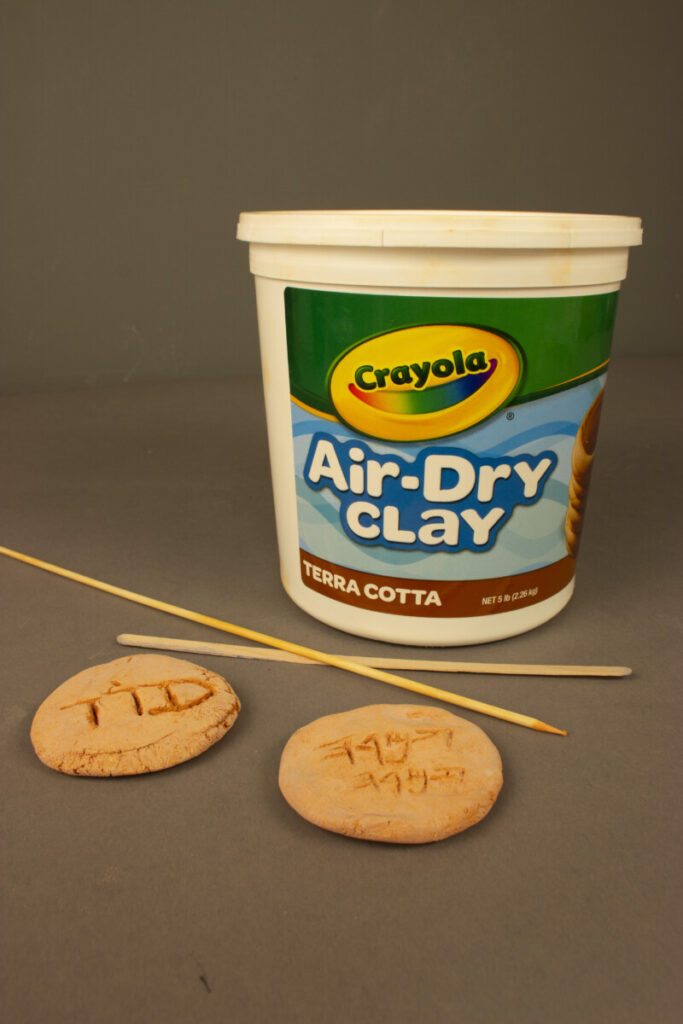Lesson Objectives: In this unit, students will learn about ancient alphabets and writing systems. They will discuss the importance of words, writing, and language in ancient history and the present. During this unit’s hands on project, students will learn about the physical processes of ancient writing by inscribing their own clay tablet.
Guiding Thematic Questions:
- How did ancient writing systems, languages, and scripts evolve?
- What role does writing play in communication and in learning in Antiquity and today?
- Who are scribes? What role did they play in ancient societies?
Historical Context:
- Pictographic symbols served as precursors to more developed writing systems such as Cuneiform, a logo-syllabic script used to write several Near Eastern languages including Sumerian, Akkadian, and Hittite. Cuneiform is thought to have originated in around 3200 BC and was ultimately replaced by alphabetic writing systems in the 2nd century AD.
- Before Modern Hebrew developed, the Israelites wrote using Proto-Hebrew, or Paleo-Hebrew sometimes known as Proto-Phoenician because they come from the same alphabet.
- One of the most important professions before the advent of the printing press was that of the scribe. In ancient Egypt, scribes inherited their fathers’ positions and were educated in the art of writing. It is because of these scribes that we know so much about ancient Egyptian society and culture.
- Sofers (Jewish scribes) are among the few scribes that still practice calligraphy by hand to this day to produce Torah scrolls and other holy texts. Strict rules and procedures govern their scribal practices including the type of animal skin parchment and ink used and figuration of the letters in order for the texts to be fit for ritual use.
Fun Facts:
- According to the Torah, Abraham was born in Ever-haNahar, Beyond the River, which is Mesopotamia
- Tablets were frequently used by children in school to learn and practice writing in cuneiform. There are many school tablets in museum collections today– some even have visible corrections written on them by the instructor
Object Images:
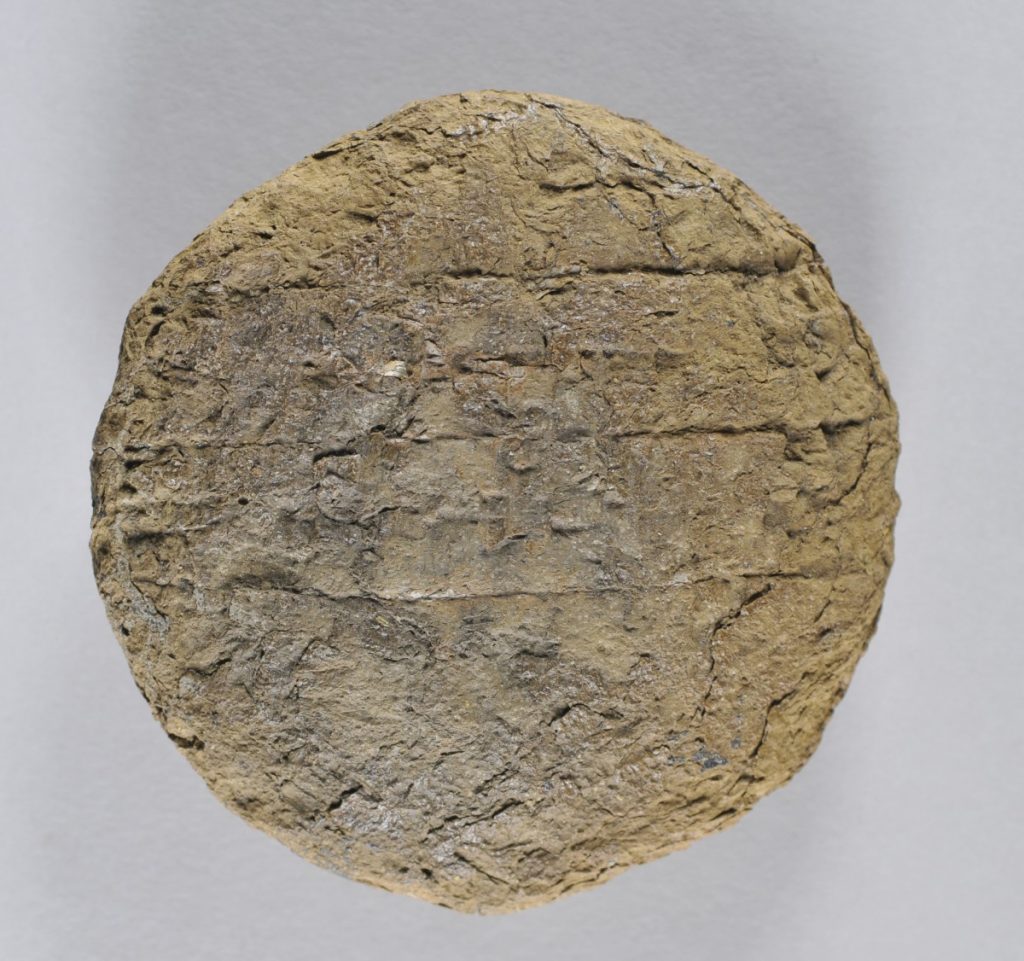
School Tablet
Babylonian
1800 BCE
Clay
4” diameter
Carlos Museum, Emory University
1921.114
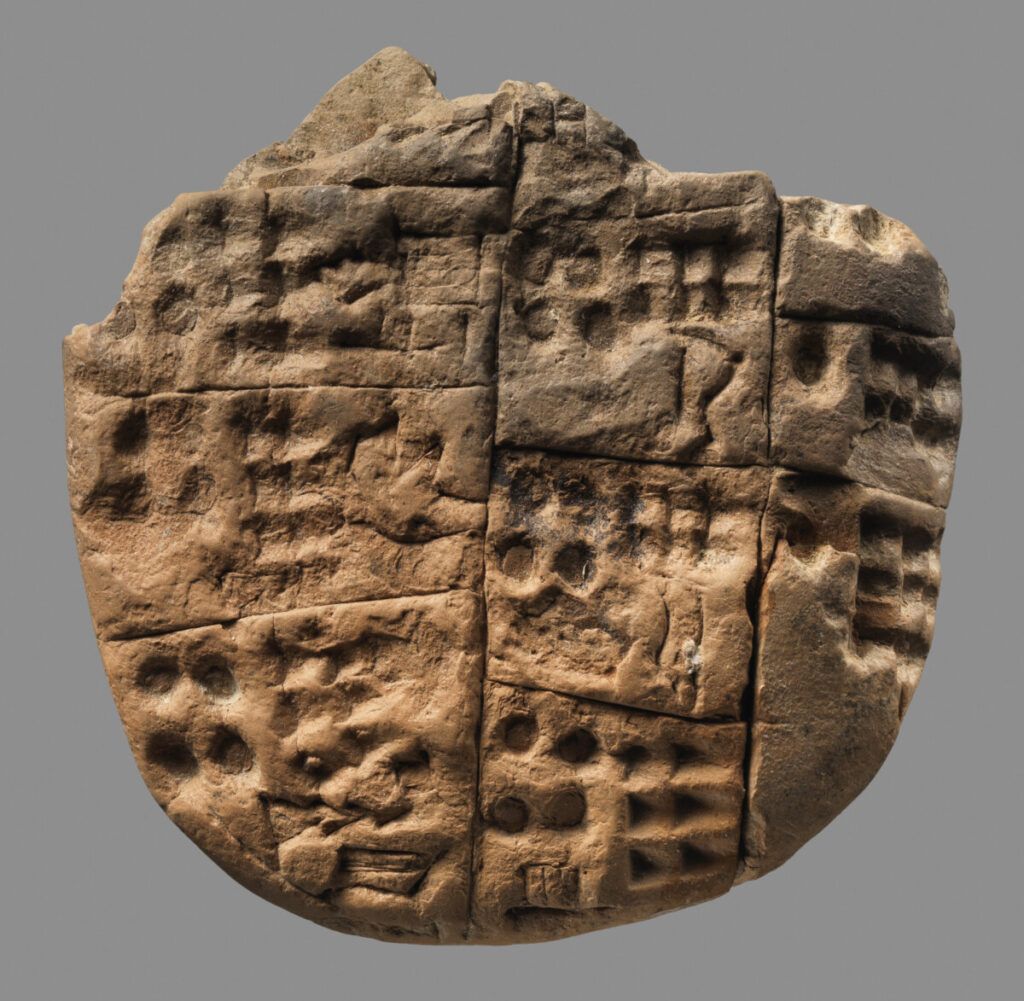
Tablet with Proto-Cuneiform Text
Sumerian
3200 BCE
Clay
2.25” x 2.25”
Carlos Museum, Emory University
2012.44.8
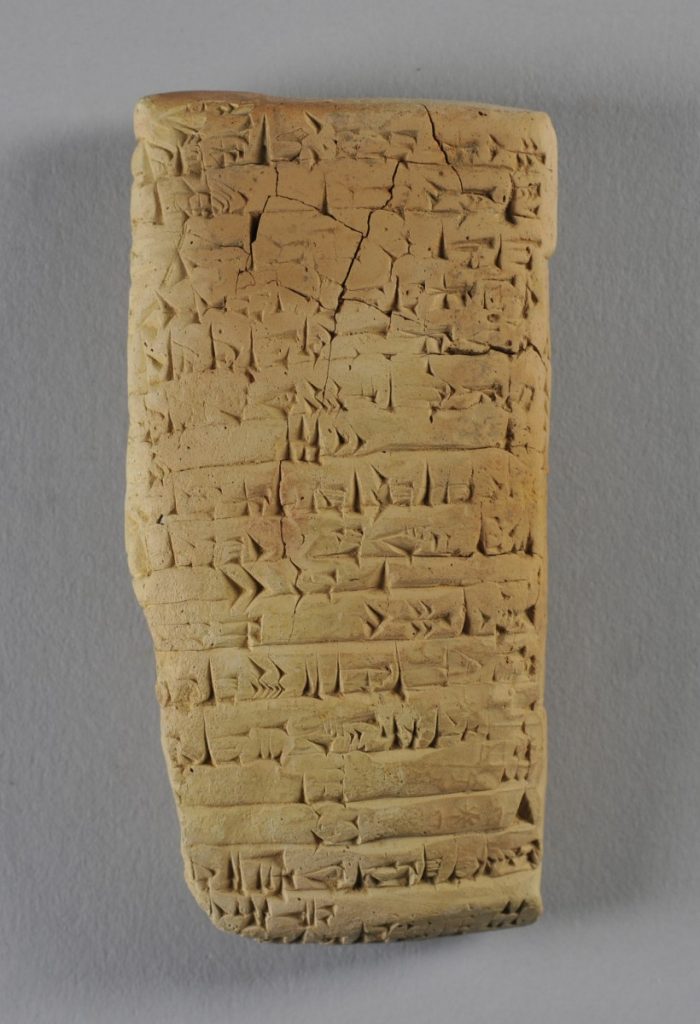
Cuneiform Tablet
Sumerian
2025-2028 BCE
Clay
4.5” tall
Carlos Museum, Emory University
1921.24
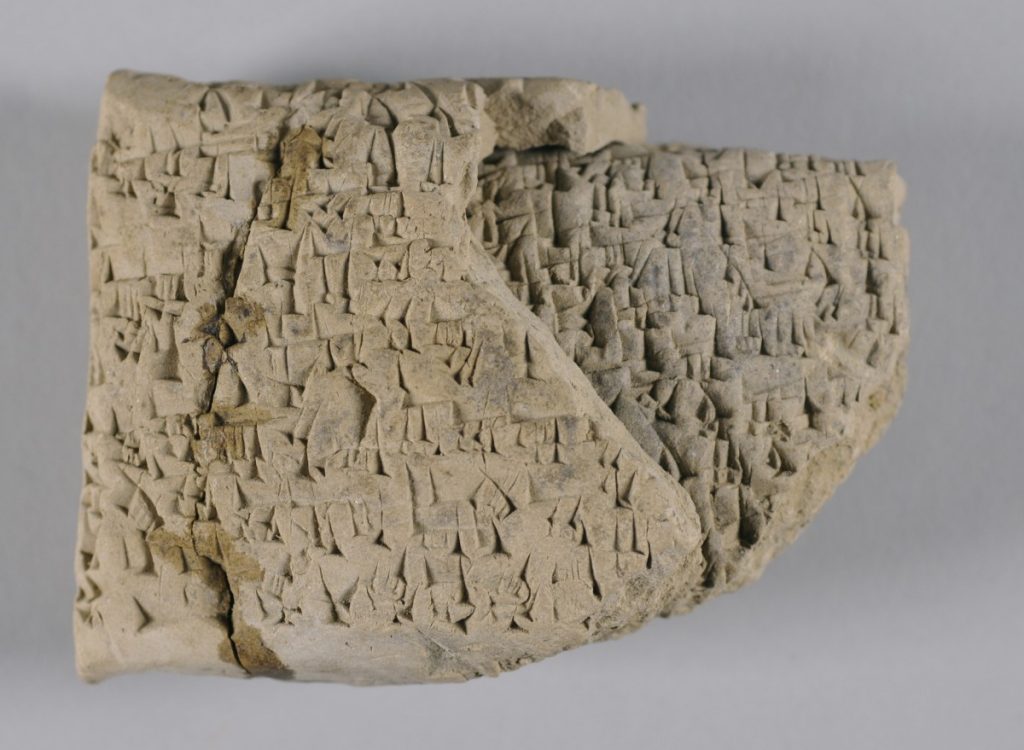
Cuneiform Tablet and Envelope
Babylonian
2000-1600 BCE
Clay
3” tall
Carlos Museum, Emory University
2012.044.107
Classroom Discussion Questions:
Why are language and writing so important?
What materials are these tablets made from?
What tool was used to make these marks?
What kind of information could have been written on a tablet?
What script(s) or languages could have been written on ancient Near Eastern tablets?
Project: Write on a Tablet
Materials:
- clay
- stylus (wooden coffee stir stick, toothpick…)
Instructions:
- mold the clay into the shape of a tablet
- practice writing things on the tablet with the stylus– write your name in Hebrew and practice the Hebrew vocabulary from this unit
